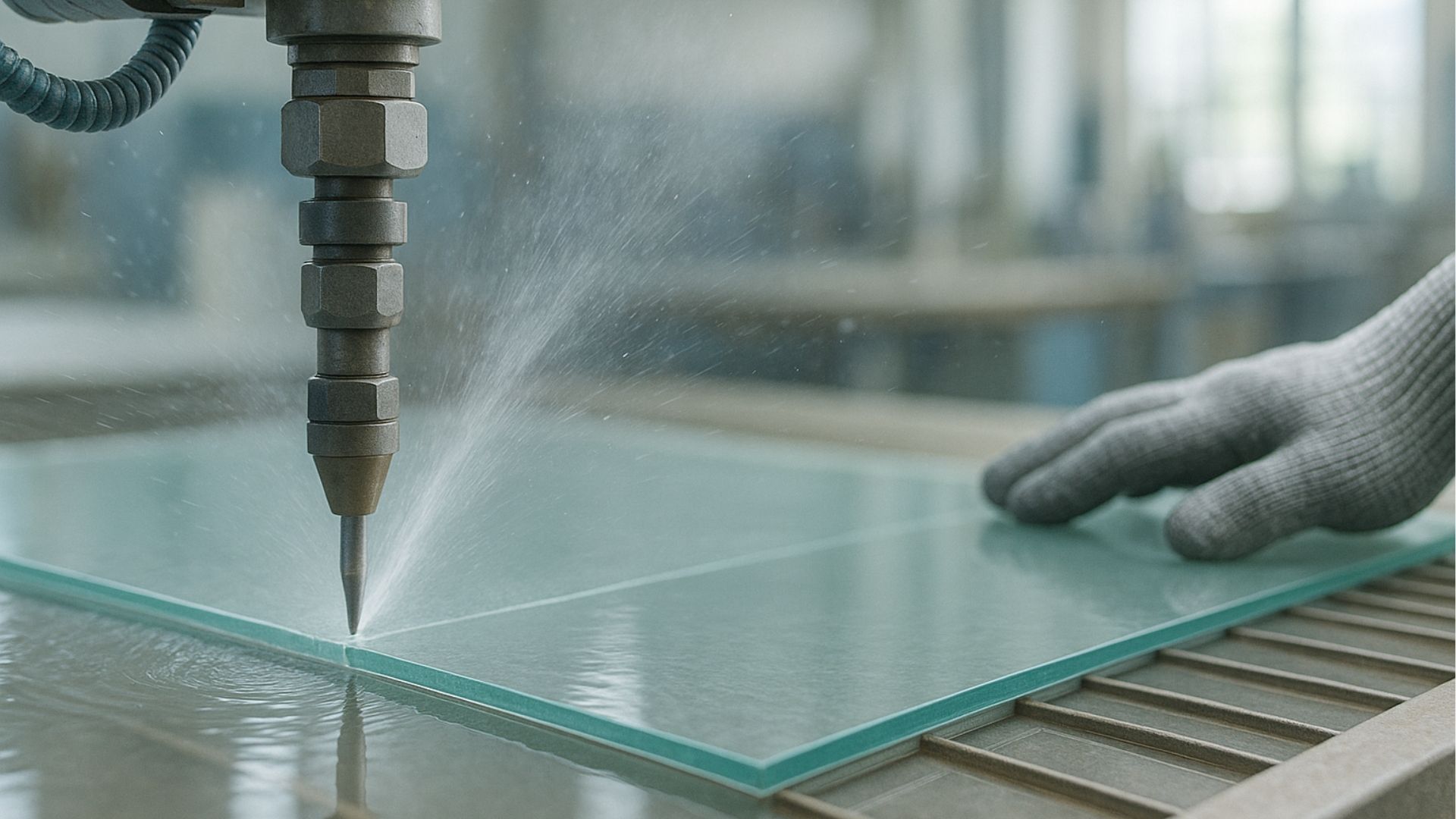Acoustic glass ratings explained
Share this blog:
Acoustic glass provides soundproofing to domestic and commercial properties. Find out how it's rated in our jargon-free glass guide.

Glass has always served a multitude of different functions. It keeps out the wind and rain, for starters. But it can also provide privacy, protection against impact, energy efficiency and soundproofing.
Perhaps you need a glass screen in a recording studio. Perhaps your home is near a main road and you're keen to dull the roar of the traffic. Maybe you want to keep boardroom conversations away from prying ears.
Whatever the reason, glass can help reduce the noise coming in and out of a property. But if you need that little bit extra, acoustic glass is the way to go.
Acoustic glass is a type of glass product built to reduce the amount of noise heard by people inside a building. It can help make a building a more pleasant environment – something that can benefit households and businesses alike.
And like many of today's glass products, it's highly customisable. Whether you need it to complement an existing aesthetic or want it frosted for privacy purposes, acoustic glass delivers versatility as well as volume reduction.
Not any old glass can be classed as acoustic glass. To be given that label, it has to be tested and rated accordingly.
Here at ToughGlaze, we supply TG AG – a versatile and durable product ideal for both domestic and commercial settings. Needless to say, it's tested and rated thoroughly and is suitable for all the applications we mention.
But before we dive into how acoustic glass is rated – what is it, exactly?
What is acoustic glass?
Acoustic glass is a type of laminated glass specially designed to reduce the amount of noise coming in and out of a building.
Laminated glass is a unit. It consists of two sheets of glass (sometimes toughened) bonded with a plastic interlayer. This provides structural integrity – and when the glass is thick, it can also deliver soundproofing qualities.
No piece of glass can completely soundproof a space. But it can dramatically reduce the level of noisy nuisances like aircraft, traffic and even rain.

Acoustic glass is effective. However, its overall effectiveness is partly determined by the quality of the installation. It must be fitted into a similarly sound-reducing framing system to maximise its effect.
What are the ratings for acoustic glass?
Acoustic glass is rated using something called the "weighted sound reduction index". This is measured in decibels (dB) – a unit of measurement for volume.
A higher weighted sound reduction index rating indicates a greater ability to block out noise. This is notated as "Rw".
The Rw of a sheet of glass is complemented by correction factors. These include C (for higher frequencies) and Ctr (for lower frequencies). Together, the Rw rating and its correction factors provide buyers with a picture of how the glass will function in the real world.
A standard double-glazed window might have an Rw of around 25 to 30 decibels. Acoustic glass goes further. It can have an Rw from 35 to 50 decibels. This superior level of performance makes it ideal for applications where noise reduction is a priority.
How is acoustic glass tested?
The glass industry is now highly regulated and standardised. Security glass, for instance, has to undergo physical attack simulations. Meanwhile, all our glass products are manufactured to meet BS EN and ISO standards and carry the Kitemark seal of approval.
Acoustic glass is no exception. To qualify as acoustic glass, the glass has to be physically tested in specialised test chambers. These chambers ensure the sound is only travelling through the glass and not through any other acoustic avenues.
A loud noise is played in the chamber and in another room. These levels are then compared and the sound reduction index is calculated.
Laboratory ratings, expressed as Rw, are typically used for glass specifications. On-site measurements, however, may be expressed as a weighted level difference such as DnTw.

When you work with ToughGlaze, you can be sure that our acoustic glass products are all tested to ensure superior performance. What's more, the basic materials are also tested for strength. The result is a product that's robust and deadening in equal measure.
What are the applications of acoustic glass?
Acoustic glass is used in a wide variety of settings. These encompass residential buildings, commercial premises and industrial facilities.
Wherever it's used, its primary purpose is to reduce noise. But high-quality acoustic glass can also improve thermal efficiency, security, privacy and even aesthetic appeal. These multiple functions are one reason why you should always aim to work with an experienced glass processor that supplies high-quality products.
Acoustic glass is used in offices, homes, schools, hospitals, hotels and cinemas to block external and internal noise. It's also used in rehearsal rooms and recording studios where musical sounds need to be isolated.
The precise Rw of a piece of acoustic glass will depend on the application. A window installed to reduce traffic noise, for instance, will have a lower Rw than one installed next to a plane runway. When in doubt, ask your glass supplier for guidance.
How we can help
At ToughGlaze, we stock TG AG – a bespoke acoustic glass product designed to keep noise to a minimum.
Like all our toughened and laminated products, TG AG can be heavily customised. It can be fire-rated for extra fire safety. It can be made switchable for extra privacy. It can be digitally printed with logos, texts or other designs. It can even be made sturdy enough to walk on.
On top of this, TG AG is Kitemark-certified and compliant with all relevant British standards.
All in all, it's a sturdy and versatile product that can help you reduce noise levels in any domestic, commercial or industrial setting.
Are you looking for high-quality acoustic glass panels? Look no further than TG AG, our specialist acoustic glass product. Contact our experts today for a quick, competitive quote.









